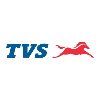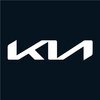
Tata Motors
Proud winner of ABECA 2024 - AmbitionBox Employee Choice Awards
Filter interviews by
Tata Motors Safety Engineer Interview Questions, Process, and Tips
Tata Motors Safety Engineer Interview Experiences
1 interview found
(6 Questions)
- Q1. Whate is a safety
- Ans.
Safety refers to the condition of being protected from harm or danger.
Safety involves identifying and mitigating potential hazards in the workplace or environment
It includes implementing safety protocols and procedures to prevent accidents and injuries
Safety also involves providing proper training and equipment to ensure the well-being of individuals
Examples: wearing personal protective equipment, following safety guid
- Q2. Whate is a sky folding
- Ans.
Sky folding is not a recognized term in the field of safety engineering.
There is no known concept or practice called sky folding in safety engineering.
It is possible that the term was used incorrectly or is not commonly known in the field.
It is important to clarify the question or term with the interviewer for better understanding.
- Q3. Whate is a odite
- Ans.
An odite is a term that does not have a standard definition in the context of safety engineering.
Odite may be a misspelling or a typo of a different term.
It is important to clarify the intended meaning of the term in order to provide an accurate answer.
Without further context or clarification, it is difficult to provide a specific answer to the question.
- Q4. Whate is a worke permite
- Ans.
A worker permit is a document issued by an employer allowing a worker to perform specific tasks or enter certain areas.
Worker permits are used to ensure that only authorized personnel are performing certain tasks.
They may be required for tasks such as working in confined spaces, operating heavy machinery, or handling hazardous materials.
Worker permits typically outline the specific tasks or areas that the worker is aut...
- Q5. Whate is a pass
- Ans.
A pass is a document or certification that allows a person or vehicle to proceed or enter a certain area.
A pass may be required to access restricted areas in a workplace or event
Passes can also be used for toll roads or parking facilities
Examples include security passes, visitor passes, and parking permits
- Q6. Whate is a near miss
- Ans.
A near miss is an incident that could have resulted in injury, damage, or loss but did not.
A near miss is a close call where an accident almost happened but was narrowly avoided.
It is important to report near misses to prevent future accidents and improve safety measures.
Examples of near misses include a tool falling from a height but narrowly missing a worker, or a vehicle almost colliding with another but swerving in
Interview Preparation Tips
Top trending discussions






Interview questions from similar companies

I applied via Recruitment Consultant and was interviewed before Dec 2020. There was 1 interview round.
Interview Questionnaire
3 Questions
- Q1. Tell me about problem solving tools.
- Ans.
Problem solving tools are techniques used to identify, analyze and solve problems.
Root cause analysis
Fishbone diagram
SWOT analysis
Pareto chart
Brainstorming
5 Whys
Flowchart
Decision matrix
- Q2. How you deal with problem.
- Q3. What you done best in last 6 months.
Interview Preparation Tips

I applied via Naukri.com and was interviewed before Jul 2020. There were 5 interview rounds.
Interview Questionnaire
2 Questions
- Q1. How can you satisfy your job
- Q2. With hardwork and my experience
Interview Preparation Tips

I applied via Approached by Company and was interviewed in Mar 2022. There were 2 interview rounds.

(2 Questions)
- Q1. CURRENTLY DOING WORKED
- Q2. WHAT DO YOU WORK IN CURRENT COMPANY
Interview Preparation Tips
- WORKING EX

I applied via Naukri.com and was interviewed before Jul 2022. There were 3 interview rounds.

(2 Questions)
- Q1. Related to Painting process
- Q2. Related to Production Management
(1 Question)
- Q1. Related to production management
Interview Preparation Tips
- Painting
- Production Management

I applied via Campus Placement and was interviewed before Jul 2023. There were 2 interview rounds.
15 Questions on maths quant and di.
(2 Questions)
- Q1. Automobile questions
- Q2. Supply chain managemengt

I appeared for an interview in Sep 2024, where I was asked the following questions.
- Q1. Design and Architecture based question for microservices.
- Q2. Understanding of microservices.

Senior Engineer Interview Questions & Answers
Hyundai Motor India Limitedposted on 25 Nov 2024
(2 Questions)
- Q1. Robot troubleshooting
- Q2. Mechanical knowledge

I appeared for an interview before Oct 2023.
(2 Questions)
- Q1. Tell me about yourself
- Q2. What was your last project
- Ans.
Designed and implemented a new cloud-based data storage system for a large e-commerce company.
Led a team of engineers to analyze requirements and design the system architecture
Utilized AWS services such as S3 and RDS for scalable and reliable storage
Implemented data encryption and access control measures to ensure data security

I applied via Referral and was interviewed in Mar 2023. There were 2 interview rounds.
(3 Questions)
- Q1. Technicals about powertrain design
- Q2. Basic questions about function of parts
- Q3. Basic questions about how to address field concerns
(1 Question)
- Q1. Why do you want to join
Tata Motors Interview FAQs
Tell us how to improve this page.
Tata Motors Interviews By Designations
- Tata Motors Senior Manager Interview Questions
- Tata Motors Graduate Engineer Trainee (Get) Interview Questions
- Tata Motors Mechanical Engineer Interview Questions
- Tata Motors Quality Engineer Interview Questions
- Tata Motors Territory Sales Manager Interview Questions
- Tata Motors Design Engineer Interview Questions
- Tata Motors Sales Executive Interview Questions
- Tata Motors Assistant Manager Interview Questions
- Show more
Interview Questions for Popular Designations
- Safety Manager Interview Questions
- Senior Safety Officer Interview Questions
- Senior Safety Engineer Interview Questions
- Safety Officer Interview Questions
- Fire & Safety Officer Interview Questions
- Safety Supervisor Interview Questions
- Fire & Safety Supervisor Interview Questions
- Senior Safety Supervisor Interview Questions
- Show more
Tata Motors Safety Engineer Interview Process
based on 2 interviews
Interview experience
Interview Questions from Similar Companies
Fast track your campus placements
Tata Motors Safety Engineer Reviews and Ratings
based on 1 review
Rating in categories
|
Senior Manager
6.3k
salaries
| ₹7 L/yr - ₹28.4 L/yr |
|
Deputy General Manager
840
salaries
| ₹18 L/yr - ₹48 L/yr |
|
Executive
817
salaries
| ₹2.4 L/yr - ₹12.2 L/yr |
|
Sales Executive
440
salaries
| ₹0.8 L/yr - ₹6 L/yr |
|
Territory Sales Manager
433
salaries
| ₹7.3 L/yr - ₹27 L/yr |

Maruti Suzuki

Mahindra & Mahindra

Mercedes-Benz Research and Development India

TVS Motor
- Home >
- Interviews >
- Tata Motors Interview Questions >
- Tata Motors Safety Engineer Interview Questions


















